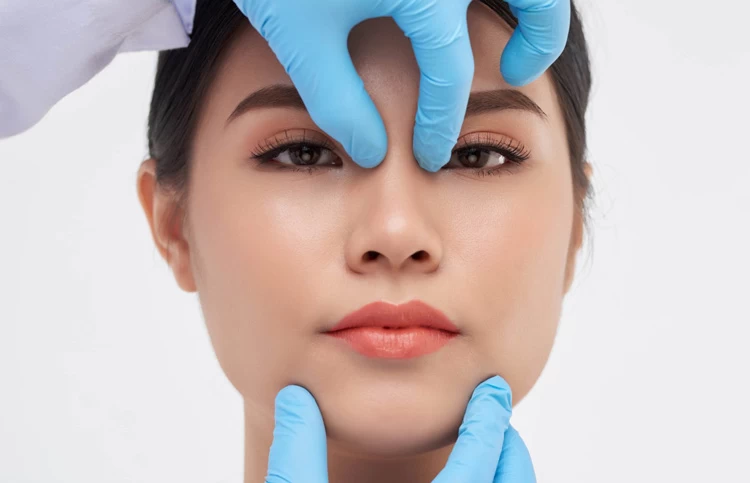Opting for rhinoplasty in Dubai(تجميل الأنف في دبي) has become a common choice for individuals seeking facial balance, improved breathing, or aesthetic enhancement. Dubai’s reputation for world-class cosmetic procedures draws patients from around the world. While rhinoplasty is generally safe when performed by experienced surgeons, it’s crucial to understand that every surgery carries certain risks. Being informed allows patients to make confident, educated decisions and prepare thoroughly for their surgical journey.
Understanding the Nature of Rhinoplasty:
Rhinoplasty, commonly referred to as a “nose job,” is a surgical procedure that modifies the shape, size, or structure of the nose. It can be cosmetic, functional, or both. Like all surgeries, rhinoplasty involves manipulating bone, cartilage, and tissue—making post-operative care and risk management key components of a successful outcome.
Common Risks Associated with Rhinoplasty:
Swelling and Bruising:
Temporary swelling and bruising are expected side effects:
- Most visible around the eyes and cheeks
- Peaks within the first week and gradually subsides
- Cold compresses and head elevation help reduce symptoms
Bleeding:
Minor bleeding from the nostrils can occur:
- Usually controlled with internal dressings
- Avoiding physical exertion and nose-blowing can reduce the risk
- Persistent bleeding should be reported immediately
Infection:
Though rare, infections can occur at the incision site:
- Signs include redness, increased pain, or discharge
- Surgeons typically prescribe antibiotics as a preventative measure
- Maintaining hygiene and following care instructions helps prevent issues
Scarring:
Scarring may happen, especially in open rhinoplasty:
- Incisions are usually made at the columella (the tissue between nostrils)
- Most scars fade over time and are barely noticeable
- Keloid or hypertrophic scars are more likely in genetically predisposed individuals
Complications That May Affect Results:
Asymmetry or Unsatisfactory Aesthetic Outcome:
Despite the surgeon’s skill, perfection is not always guaranteed:
- Healing irregularities can lead to asymmetry
- Minor contour issues may appear after swelling subsides
- Revision rhinoplasty might be required to correct imperfections
Difficulty Breathing:
Post-surgery nasal obstruction is a common concern:
- Swelling inside the nasal passages can cause congestion
- Structural changes might narrow airways unintentionally
- Functional issues can be addressed with additional corrective procedures
Numbness or Sensation Changes:
Altered sensation in the nose or upper lip may be noticed:
- Usually temporary and resolves over a few weeks to months
- Caused by nerve irritation during surgery
- Permanent numbness is rare but possible
Psychological and Emotional Considerations:
Dissatisfaction with Appearance:
Patients may struggle with the emotional adjustment to their new look:
- Unrealistic expectations can lead to disappointment
- Gradual changes in appearance may take up to a year to fully settle
- Psychological support or counseling may help those with body image issues
Post-Surgical Depression:
Feeling low after surgery is more common than most expect:
- Known as post-surgical blues
- Caused by pain, swelling, or unexpected emotional responses
- Usually subsides within a few weeks
Less Common but Serious Complications:
Septal Perforation:
A hole in the septum (wall dividing the nostrils) can develop:
- Can lead to breathing issues, crusting, or whistling sounds
- Often requires surgical repair
- More likely with aggressive cartilage removal
Skin Discoloration or Breakdown:
Compromised blood supply can affect skin quality:
- Can result in prolonged redness or even tissue death (necrosis)
- Smoking significantly increases this risk
- Proper aftercare and choosing a qualified surgeon reduce chances
Anesthesia-Related Risks:
General anesthesia is typically safe but carries standard surgical risks:
- Allergic reactions
- Nausea or vomiting post-procedure
- Respiratory complications in rare cases
Importance of Surgeon Selection:
Choosing the right surgeon plays a critical role in minimizing risk:
- Look for board-certified specialists with a strong portfolio
- Ensure they have specific experience in rhinoplasty(تجميل الأنف)
- Schedule a comprehensive consultation to discuss goals and expectations
How to Reduce Risks Before and After Surgery:
Before Surgery:
- Stop smoking and alcohol consumption weeks before the procedure
- Inform the surgeon of all medications and supplements
- Get lab work and pre-operative evaluations as recommended
After Surgery:
- Follow all post-operative instructions closely
- Attend scheduled follow-up appointments without delay
- Avoid high-risk activities like contact sports or heavy lifting
Candidates More Susceptible to Complications:
Smokers:
- Smoking limits oxygen flow and delays wound healing
- Increases the risk of infection and tissue damage
Individuals with Medical Conditions:
- Diabetes, high blood pressure, or clotting disorders can complicate recovery
- A detailed medical evaluation is necessary before proceeding
Patients Seeking Revision Surgery:
- Scar tissue and altered anatomy make secondary surgeries more complex
- Success rates can be lower and complications more likely
Setting Realistic Expectations:
Understanding that no surgery can offer perfection helps patients feel more satisfied:
- Results vary depending on individual anatomy and healing response
- A skilled surgeon can enhance facial harmony but not completely transform your features
- Open dialogue about achievable outcomes is essential during consultation
Long-Term Considerations:
Aging:
- Over time, the nose may continue to change shape due to aging
- Gravity and cartilage weakening can subtly affect long-term results
Trauma:
- Post-rhinoplasty noses are more susceptible to damage
- Even minor impacts can alter the surgical outcome if healing isn’t complete
Lifestyle Impact:
- Long-term sun exposure can damage healing skin
- Adopting a skin care and sun protection routine is highly advised
Conclusion:
While rhinoplasty in Dubai offers world-class surgical options and state-of-the-art clinics, every patient should be aware of the inherent risks involved. Most complications are rare and avoidable with proper care, realistic expectations, and an experienced surgeon. The goal of rhinoplasty is not perfection, but balance—enhancing your natural beauty while preserving facial harmony.
By staying informed, cautious, and cooperative with your surgeon’s advice, you can significantly reduce your risk and enjoy a successful, confidence-boosting outcome.

